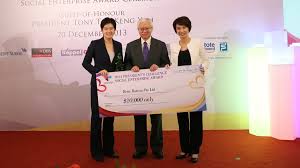Government Grants
Business Grants
Home Owner Programs
Federal Programs
About Us
Self-Decontaminating PPE Fabric
Development of a fabric technology that could be incorporated into a duty uniform garment.
This fabric technology would provide real-time initial decontamination after an exposure to a minimum of two of the following selected chemicals at the vendor provided challenge level to include liquid and vapor challenges:
acetone, ethyl acetate, 50 percent w/w/ sodium hydroxide, 9 3. 1 percent w/w sulfuric acid, toluene, dimethylformamide, and nitrobenzene .
A required characteristic of this technology is that it must work under extreme weather conditions (e.g., variability in temperature, humidity, and precipitation), and ideally also be fire resistant.
Additionally, at a minimum, it must meet the NFPA 1975 thresholds for total heat loss (THL), thermal stability, flame resistance, and heat and thermal shrinkage resistance after 1, 5, and 10 wash cycles .
This fabric technology would provide real-time initial decontamination after an exposure to a minimum of two of the following selected chemicals at the vendor provided challenge level to include liquid and vapor challenges:
acetone, ethyl acetate, 50 percent w/w/ sodium hydroxide, 9 3. 1 percent w/w sulfuric acid, toluene, dimethylformamide, and nitrobenzene .
A required characteristic of this technology is that it must work under extreme weather conditions (e.g., variability in temperature, humidity, and precipitation), and ideally also be fire resistant.
Additionally, at a minimum, it must meet the NFPA 1975 thresholds for total heat loss (THL), thermal stability, flame resistance, and heat and thermal shrinkage resistance after 1, 5, and 10 wash cycles .
Related Programs
Homeland Security, Research, Testing, Evaluation, and Demonstration of Technologies
Department of Homeland Security
Agency: Department of Homeland Security
Office: Office of Procurement Operations - Grants Division
Estimated Funding: $250,000
Office: Office of Procurement Operations - Grants Division
Estimated Funding: $250,000
Obtain Full Opportunity Text:
Not Available
Additional Information of Eligibility:
Not Available
Full Opportunity Web Address:
Contact:
Janet BaileyGrants SpecialistPhone 202-447-0362
Agency Email Description:
Grants Officer
Agency Email:
janet.bailey@hq.dhs.gov
Date Posted:
2016-06-06
Application Due Date:
2016-07-01
Archive Date:
2016-07-31
Social Entrepreneurship
Spotlight
3 Social Enterprises Earn Honors at Social Enterprise Award

Three social enterprises were recognized at the 2013 President’s Challenge Social Enterprise Award for their major contributions to society. SATA CommHealth and Bliss Restaurant landed Social Enterprise of the Year titles, while Bettr Barista Coffee Academy bagged the award for Social Enterprise Start-up of the Year.
